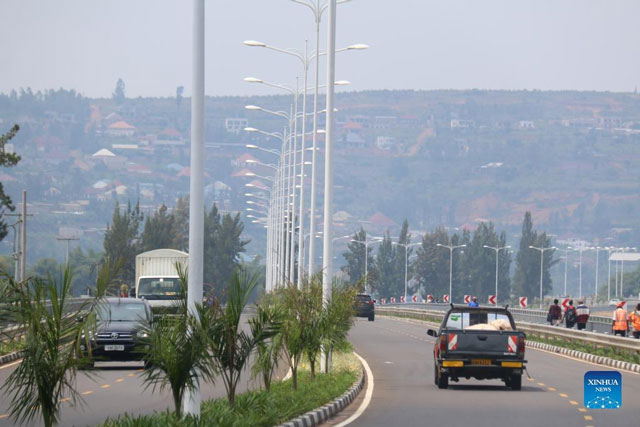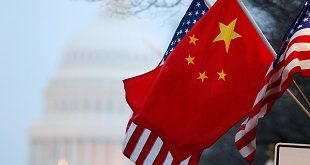
Revisiting a country whose development trajectory and welfare outcomes defy historic precedents
THE LAST WORD | ANDREW M. MWENDA | On October 15th, I travelled to Kigali, Rwanda. It was my first time to visit the country since October 2018. I had little time to visit places to see the changes that had taken place in my four years of absence. But on Tuesday, October 18, I ran 16km around Kigali. Little has changed in terms of the overall direction the city (and country) has been growing over the last two decades. But a lot has improved. Many new roads have been paved, the flower gardens have grown and look prettier, the trees are more mature, the pedestrian sidewalks are well maintained, the streets are clean and of course very many high raise buildings are springing up.
Running through Kigali is like running in a city of an advanced country like Vancouver in Canada or Dubai in UAE. Poor (and even middle income) countries find it difficult to sustain their public infrastructure: street and traffic lights do not always work, potholes rule the roads, sidewalks are often absent or poorly maintained, flower gardens are overgrown, city lawns are bushy, a lot of garbage liters the streets, etc. I have been to cities in 34 African countries and many more cities in countries in Asia plus Latin America and the story above is the story of cities like Accra, Nairobi, Mumbai, Lagos, Mexico, Sao Paulo, Bangkok etc. Even cities in advanced countries like New York in USA suffer similar.
Rwanda is a very poor country, in fact among the bottom 30 poorest countries in the world in terms of GDP per capita. Its total GDP is $11.2 billion, which, when adjusted to purchasing power parity (PPP) comes to $33 billion, according to the IMF. Its per capita income is about $850 ($2,550 in PPP). Its total budget this financial year is $3.5 billion, which, when adjusted to PPP comes to $10.45 billion. That gives us public spending per person of $257 or $772 in PPP. That is not enough public spending to ensure an effective, leave alone efficient, delivery of a large basket of public goods and services to all its citizens who need them.
Yet Rwanda is often somehow different from its sister poor countries. In terms of welfare outcomes to its people, the country punches far above its weight. For instance, its public expenditure is at 32% of GDP. Now that is closer to public spending of a middle-income country. In fact, this high ratio of public spending to GDP is evidence of highly effective levels of tax administration, an indictor many economists use as a proxy for measuring state capacity. For instance, Uganda’s public spending as a share of GDP is 22%, Tanzania 18%, Kenya 25% and Nigeria is only 13% while that of Norway is 48%, Sweden 50% and USA 42%.
Yet with this little public spending, Rwanda is able to sustain a quality of public infrastructure and services almost at the standard of a rich country. What makes this possible? Of course, it is obvious that this is a result of good and effective leadership. But if such leadership is all that is needed, why haven’t other nations of Africa (or other parts of the world) produced that kind of leadership that can in turn produce these infrastructure (and other welfare) outcomes as Rwanda has done? In fact, the advanced nations of today did not provide such levels of public infrastructure and welfare that Rwanda does while at its level of development as measured by her per capita GDP and per capita public spending.
If we accept that its mainly a function of leadership, then the conclusion is that leadership of good quality is a rare commodity that chances upon nations once in a blue moon. Africa has been independent for over 60 years. During this time, it has seen over 400 governments come and go in its 54 countries. Some have been multi party democracies, others single party authoritarian governments. Some have been military dictatorships, others revolutionary insurgent movements. Some have been led by young people others by the elderly. Some governments have been led by highly educated intellectuals, others by illiterate or semi-literate leaders. Some governments have been socialist, others capitalist.
Yet in spite of all this diversity, and except for very few exceptions, governments in Africa have produced almost similar developmental and welfare outcomes. So, the question is: why has such a diverse array of leaderships produced similar results in 54 countries across 60 years in spite of many changes of governments and a large variety of leadership styles as outlined above? I find it difficult to believe that the perpetual failure of those 400 governments across 60 years in 54 countries can be reduced to the claim that the leaders did not care about their people. I am always led to believe that there are bigger structural factors that provide an explanation that goes beyond individual leaders and their aspirations.
In fact, when you study the history of advanced countries, you find that when they were at the same level of per capita GDP and per capita spending as African nations of today, and also when they were still having similar structural and demographic characteristics as African nations today, they were not managed any differently from our countries. For instance, when their per capita spending was about $800 in PPP as Rwanda’s is today; when only 30% of their populations were urbanised and 70% were depending on agriculture for a livelihood, the nations of Europe and North America provided very little in terms of public goods and services to their people. Instead, they relied largely on patronage (public corruption) and repression as their reliable governance strategies.
From this historic perspective, therefore, the governance strategies of governments in Africa and the welfare outcomes of our nations are actually consistent with our levels of development as measured by per capita spending, and as measured by our structural characteristics such as urban versus rural distribution of the population, levels of literacy and demographic characteristics. The lesson from historical analysis is that Africa (and other poor countries) are not as dysfunctional as we think. Their governance strategies and their welfare outcomes only reflect their structural characteristics.
This brings me to my conclusion: that Rwanda’s ability to build and maintain public infrastructure at the level of an advanced country yet with very low public spending is unprecedented in historic terms. I will speculate on the factors that have made this possible, including its leadership, in my next article.
****
amwenda@independent.co.ug
 The Independent Uganda: You get the Truth we Pay the Price
The Independent Uganda: You get the Truth we Pay the Price




It is the ugliness that is always lurking below the Rwandan narrative that most chroniclers have expertly avoided.Growing up in western Uganda and listening to the powerful radio Rwanda, one got a feeling that Rwanda was some Paradise. Those beautiful jingles of amajyambere dominated the air waves in the 1980s but most of us were oblivious of the numerous Banyarwanda in our midist..I imagine the displaced Rwandans in DRC are almost assimilated but waiting for the next cycle of violence.
Thanks
Majority always prefer violence, keep the dream.
“Instead, they relied largely on patronage (public corruption) and repression as their reliable governance strategies.”
Andrew’s pet subject.
1.What ?already in Rwanda?
2.The Ugandans,Congolse and Nigerians have the same characteristics; a section of these nations is blessed with highly educated people and a wealth of natural resources but there is something wrong with her people like not paying attention to little acts like etiquette courtesy and seriousness .For example; i was in Entebbe recently in a supermarket there was were many school children in the queue paying for the snacks they had bought one just jumped the queue and thought it was normal just that i was in a good mood i just ignored her; what does this say??perhaps she was not taught how to say excuse me please may i ……….. ;why does UNRA print receipts for every car that uses the express highway ?cant they see that they make the road and peoples’ cars dirty?
3, In Uganda; somehow people earn quick money through disorder this also temporarily saves the government from pressue.Rajab can place his yams in the middle of Kampala road and they are sold out within seconds.at times the government is in a dilemma because people have to survive. Its that sympathy that makes her different from Rwanda ad Kenya
Andrew, I have no problem with “order”. The chaos and mess in Kampala is the Shauriyako Face and indisputable character of Gen Tibuhaburwa (failure in organizational leadership). If Mr. M7 could tell off Ugandans that that he is not their servant nor employee; that meant he does not give a damn about what a Capital City should be or looks like.
In any case, because of the iron-grip fascism on liberty, there is no difference between Kigali and Pyongyang, where everything only has propaganda value.